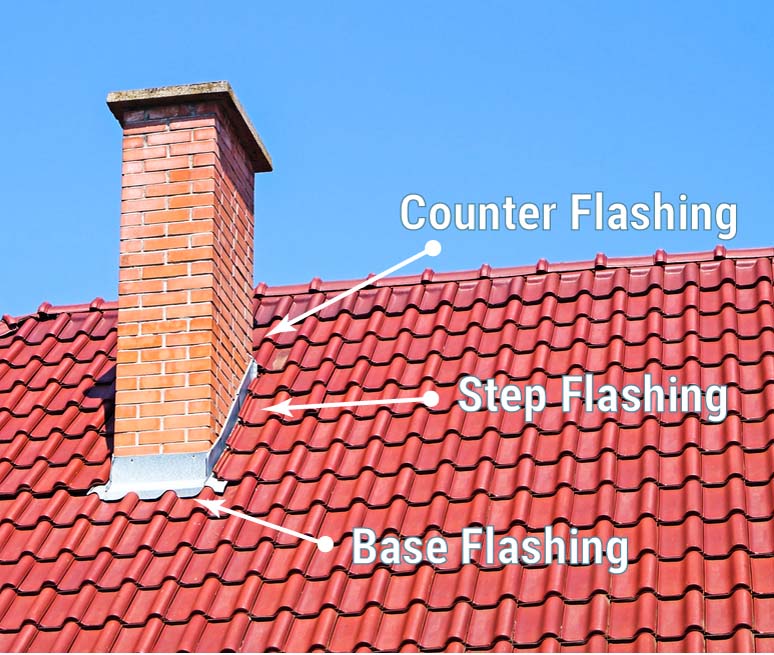Trust Smalling Masonry To Repair or Install Your Chimney Flashing
Exposure to water and moisture is the biggest threat to chimneys. Over time, water damage can lead to chimney leaks, cracks in the masonry, mold, and mildew build-up, rusted metal components, and more. Fortunately for homeowners, there are a lot of ways to preserve your chimney and prevent expensive repair work. One of the simplest and most cost-effective options for chimney protection is chimney flashing.
Smalling Masonry installs and repairs chimney flashing for residents throughout Indianapolis. We provide chimney repair services for customers in Marion County, Hamilton County, Johnson County, Hancock County, Hendricks County, Morgan County, and Boone County. Call or reach out online with questions or pictures now.
What Is Chimney Flashing & Why Do I Need It?
The area where your chimney and roof meet is especially vulnerable to water damage. There can be gaps because the difference in materials used on the roof and chimney make it difficult to seal this spot completely. Chimney flashing offers a watertight barrier between the chimney and the roof that is usually made up of corrosion-resistant metal like aluminum or galvanized steel.
Chimney flashing is completed in three steps:
- Base flashing, the bottom layer of flashing that is installed beneath the roofing material.
- Step flashing, the secondary layer placed beneath the shingles or roofing material (which overlaps with the next piece, creating a series of protective steps).
- Counter flashing, the top layer that is inserted into a groove or chase that is cut into the chimney’s masonry.

How Can I Tell if My Flashing Is Damaged or Missing?
Most homeowners don’t regularly hang out on their roofs, so it’s possible that your chimney flashing is already in need of repair or replacement. If you don’t know what to look out for, it can be hard to spot hints that water is getting into your chimney. There are a few classic signs of a chimney leak that may be the result of damaged flashing:
- The presence of mildew and mold
- Stains on the ceiling and walls near your chimney
- Peeling wallpaper or paint
- Discoloration around your fireplace
- Chipped or cracked masonry
- Water pooling in your firebox
If you notice any of these problems, don’t wait to schedule a chimney inspection. An unresolved chimney leak will cause more damage the longer it goes on unchecked, which results in more stress and expense down the line. Our technicians are certified by the Chimney Safety Institute of America (CSIA), so there isn’t a better team to get your chimney in tip-top shape and working at full efficiency.
How Often Should Chimney Flashing Be Replaced?
The lifespan of chimney flashing can vary depending on what type of material it’s made of, how well it’s been maintained, if it’s been previously repaired, and if it was properly installed in the first place.
It’s important to stay on top of your chimney care with regular inspections. The CSIA recommends at least one inspection a year, and a proactive maintenance plan with annual check-ups and cleanings will let you get ahead of repairs and save you a lot of money. Work with Smalling Masonry for it all. We’ve got your back.
Don’t Hesitate, Reach Out Now
If you’ve seen signs of a leaky chimney or want to inquire about our maintenance plans, get in touch with Smalling Masonry today. Our customer service team is ready to help you with any questions or concerns you have along the way. Reach out to us by phone at 317-903-8121 or schedule an appointment online.
Installing an outside mount chimney cap is a big step towards reducing the need for chimney repairs later on. Call us for more informawtion.
